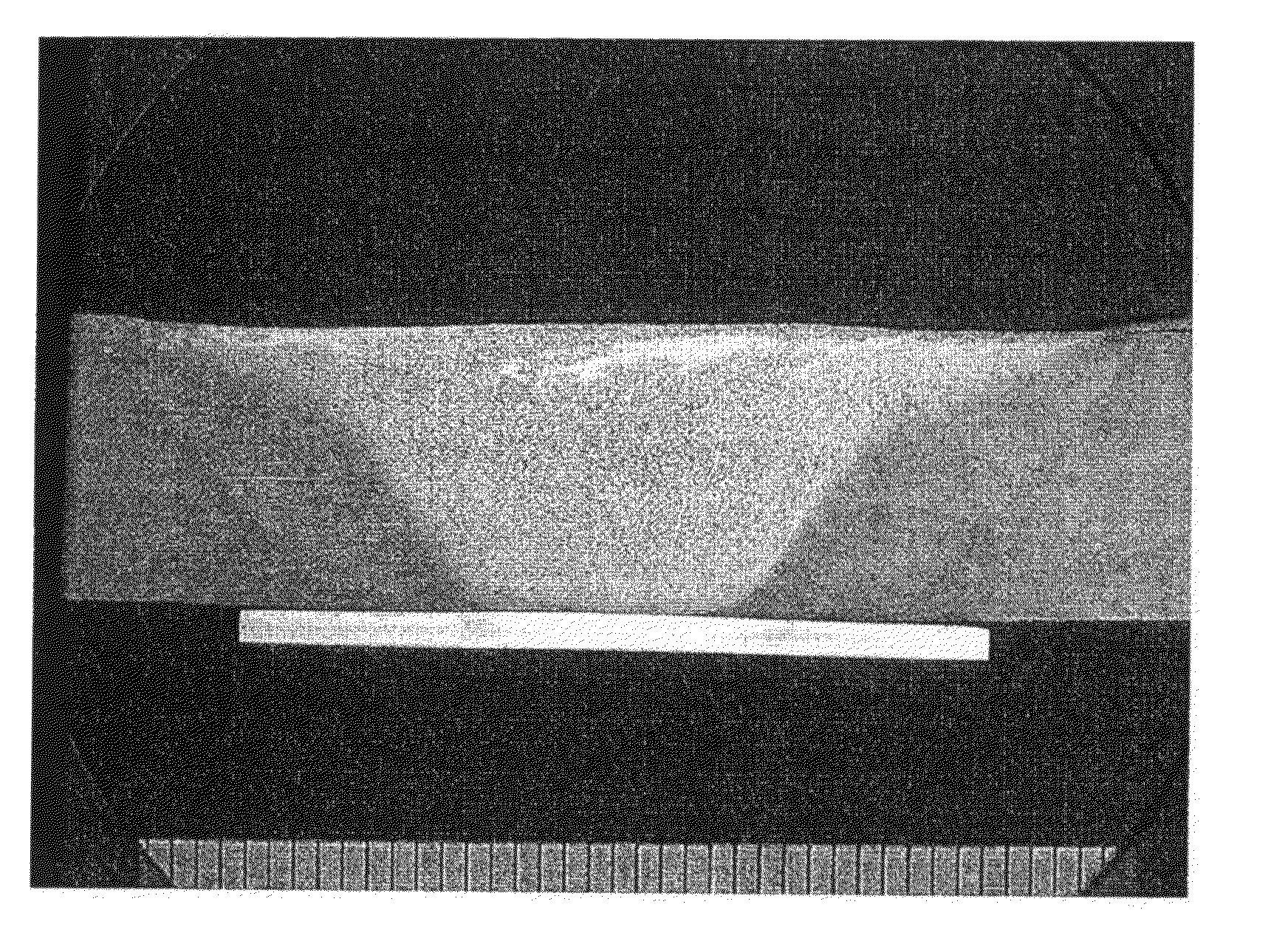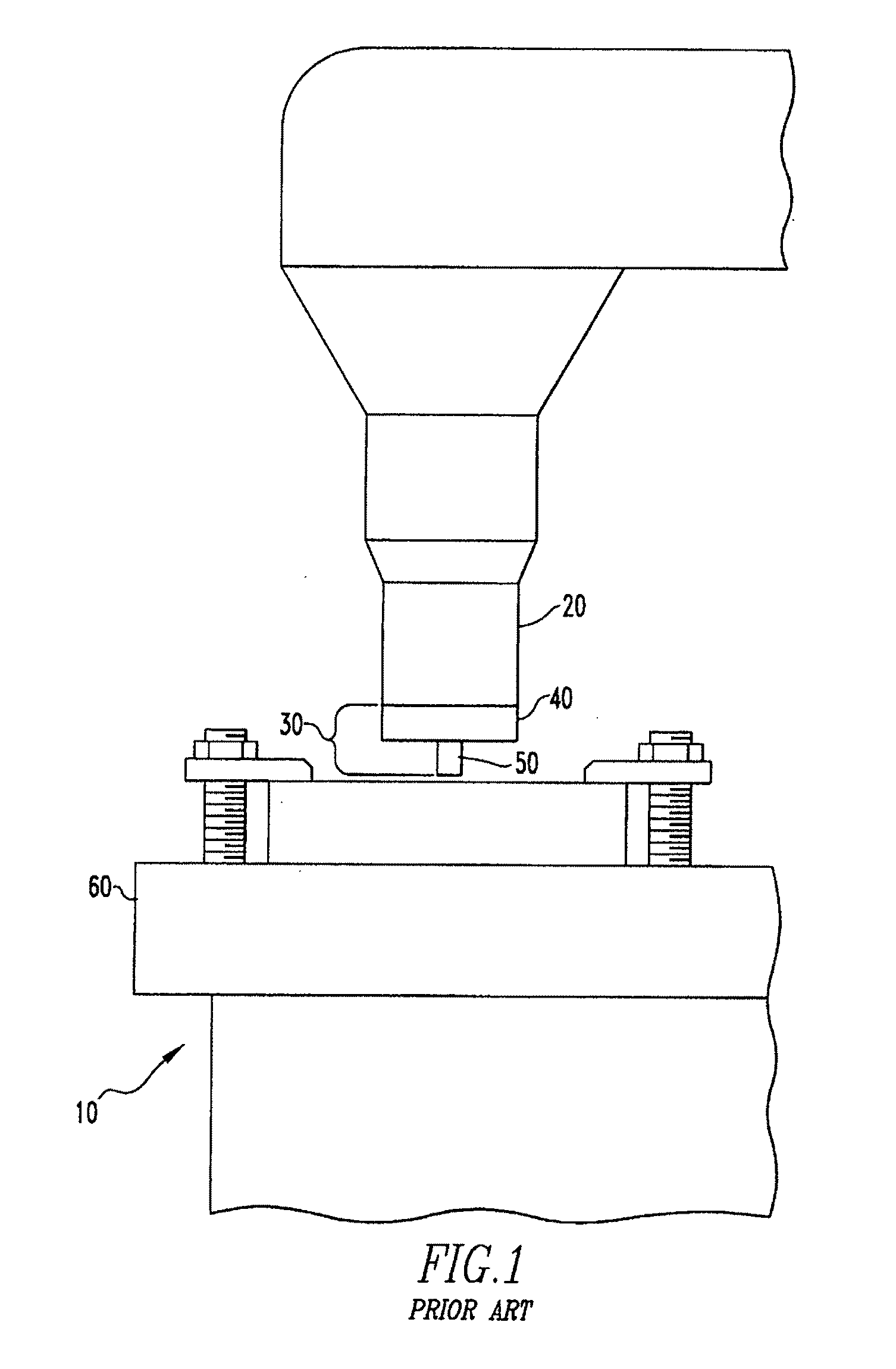Refractory metal tool for friction stir welding comprising a shoulder made of tungsten, molybdenum, tantalum, niobium or hafnium alloy and a coated or treated surface
a technology of friction stir welding and refractory metals, which is applied in the direction of soldering auxilary devices, other manufacturing equipment/tools, and soldering apparatus, etc., can solve the problems of increasing the application of fsw, affecting the performance of the tool, and affecting the welding effect of the tool,
- Summary
- Abstract
- Description
- Claims
- Application Information
AI Technical Summary
Benefits of technology
Problems solved by technology
Method used
Image
Examples
example 1
No Treatment
[0054]This tool was evaluated as a reference for all other tools. A pilot hole was drilled in the steel and a “weld” carried out without the use of any protective atmosphere. The tool reached a temperature in excess of 1200° C. but there was no smoking, possibly due to a protective tantalum oxide layer being formed in situ. The weld, stopped after 500 mm, was quite smooth, but tool wear was excessive, the point being completely eroded. Wear of the point and the shoulder both occurred. This tool is shown in FIG. 3, both before and after welding.
example 2
Carbo-Nitriding
[0055]Carbo-nitriding was achieved by heating the tool to about 1,000° C. for about 10 minutes in an enclosed container in a nitrogen atmosphere. The tool was then contacted 3-4 times with a case hardening powder containing carbon, sodium carbonate and molasses (Kasenit, available from Dacar Tools Limited, UK). The tool was cooled under a nitrogen atmosphere as well. The surface of the sample was coated with a white crumbly deposit which scraped off easily. This converted the surface layer to tantalum carbide to a depth of approximately 100 μm and increased the hardness from ˜200 Hv (300) (Vickers Hardness Number) to ˜1000 Hv (300). Some oxidation occurred and the diameter was reduced considerably but the tool acquired a hard, black coating. Because of the reduction in diameter, it was necessary to use a shim to hold it centrally in the collet. A very smooth weld was produced. There was wear of the point but the shoulder showed little if any wear. This tool is shown i...
example 3
[0056]A tool was heated at 850° C. for 2½ hours in a tube furnace under nitrogen atmosphere, cooled at 200° C. for 30 minutes and brought to atmosphere for 30 minutes until cooled to room temperature. This process was repeated a further two times but was held at 850° C. for just 30 minutes each time. After each heating / cooling cycle, hardness was measure until the maximum hardness was achieved. This produced a surface hardness in the region of 1000-1300 Hv(300). Thus the tool was hardened for a total of 4 hours at 850° C. The point showed some wear but was still generally intact and the weld was very smooth. This tool is shown in FIG. 5.
PUM
| Property | Measurement | Unit |
|---|---|---|
| Percent by mass | aaaaa | aaaaa |
| Percent by mass | aaaaa | aaaaa |
| Thickness | aaaaa | aaaaa |
Abstract
Description
Claims
Application Information
 Login to View More
Login to View More - Generate Ideas
- Intellectual Property
- Life Sciences
- Materials
- Tech Scout
- Unparalleled Data Quality
- Higher Quality Content
- 60% Fewer Hallucinations
Browse by: Latest US Patents, China's latest patents, Technical Efficacy Thesaurus, Application Domain, Technology Topic, Popular Technical Reports.
© 2025 PatSnap. All rights reserved.Legal|Privacy policy|Modern Slavery Act Transparency Statement|Sitemap|About US| Contact US: help@patsnap.com



